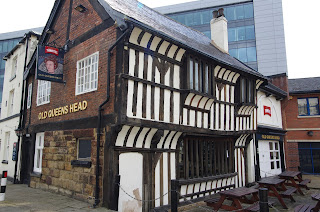Coventry

When one thinks of Coventry, one thinks it is part of the general industrial sprawl that is the West Midlands; and a city that got flattened by the Luftwaffe during the Blitz. This does Coventry a massive disservice. Medieval Coventry was one of England's great cities; founded by the Romans, it expanded into a religious centre in the 700s. A market was established and by the twelfth century a castle was erected. By the fourteenth century Coventry was an important market, boasting guildhalls and a great civic wealth based upon the cloth trade. Between 1350 and 1400 the city erected stone walls, fully encompassing the city. Coventry was described as having 12 gateways and 32 towers; although this would appear to have been 20 individual towers and 12 gateways (with towers). This is backed up by Speed's 1610 map of the city. The city had a strong affiliation with the crown, but when Charles I requested the tax known as "ship money" in 1635, protests broke out. By the time...



